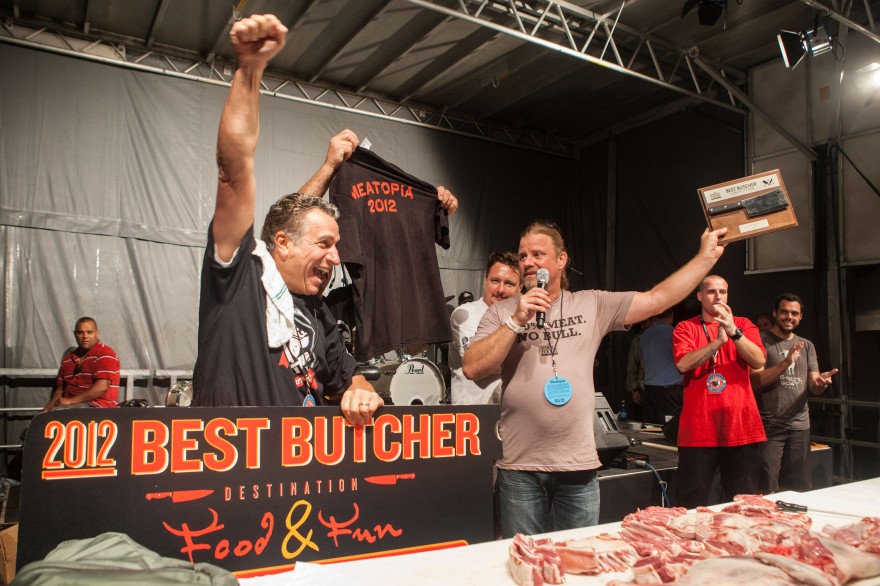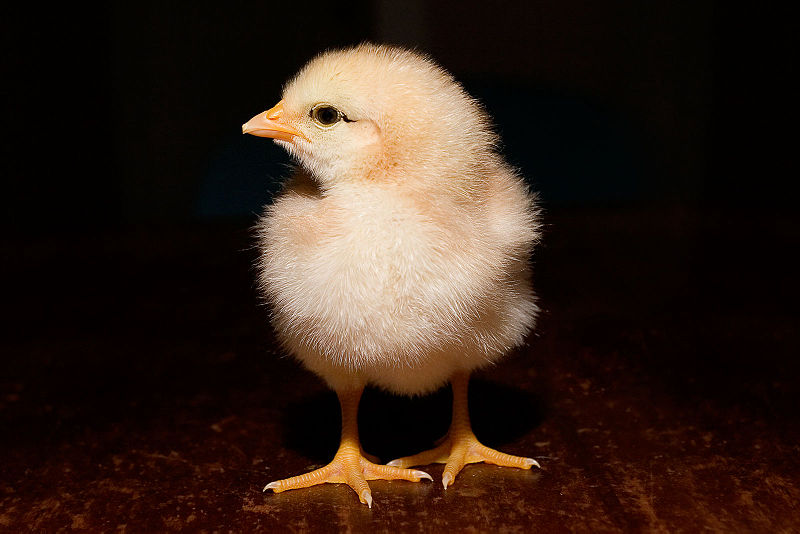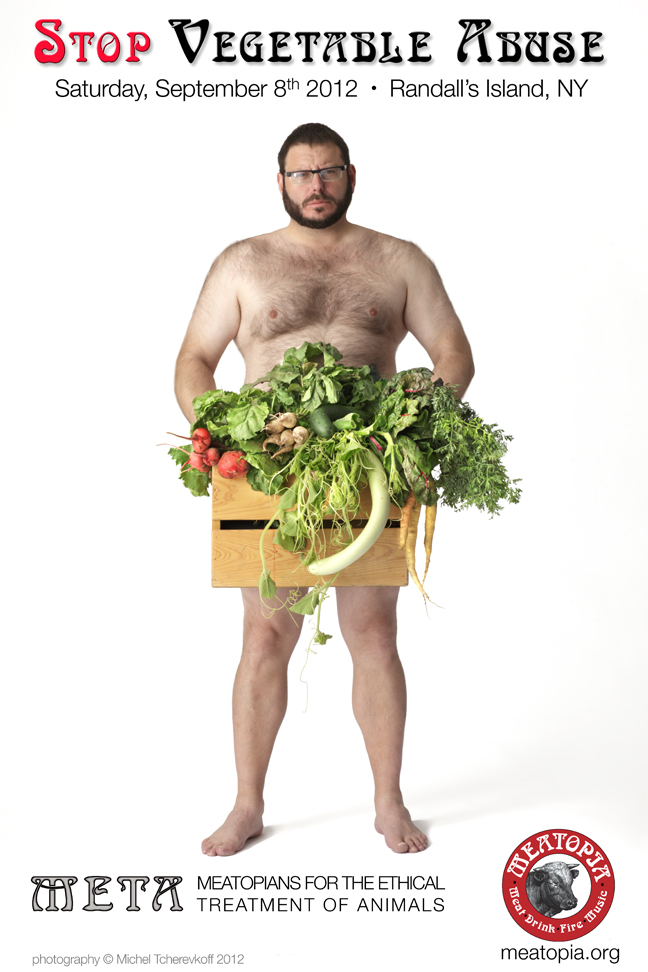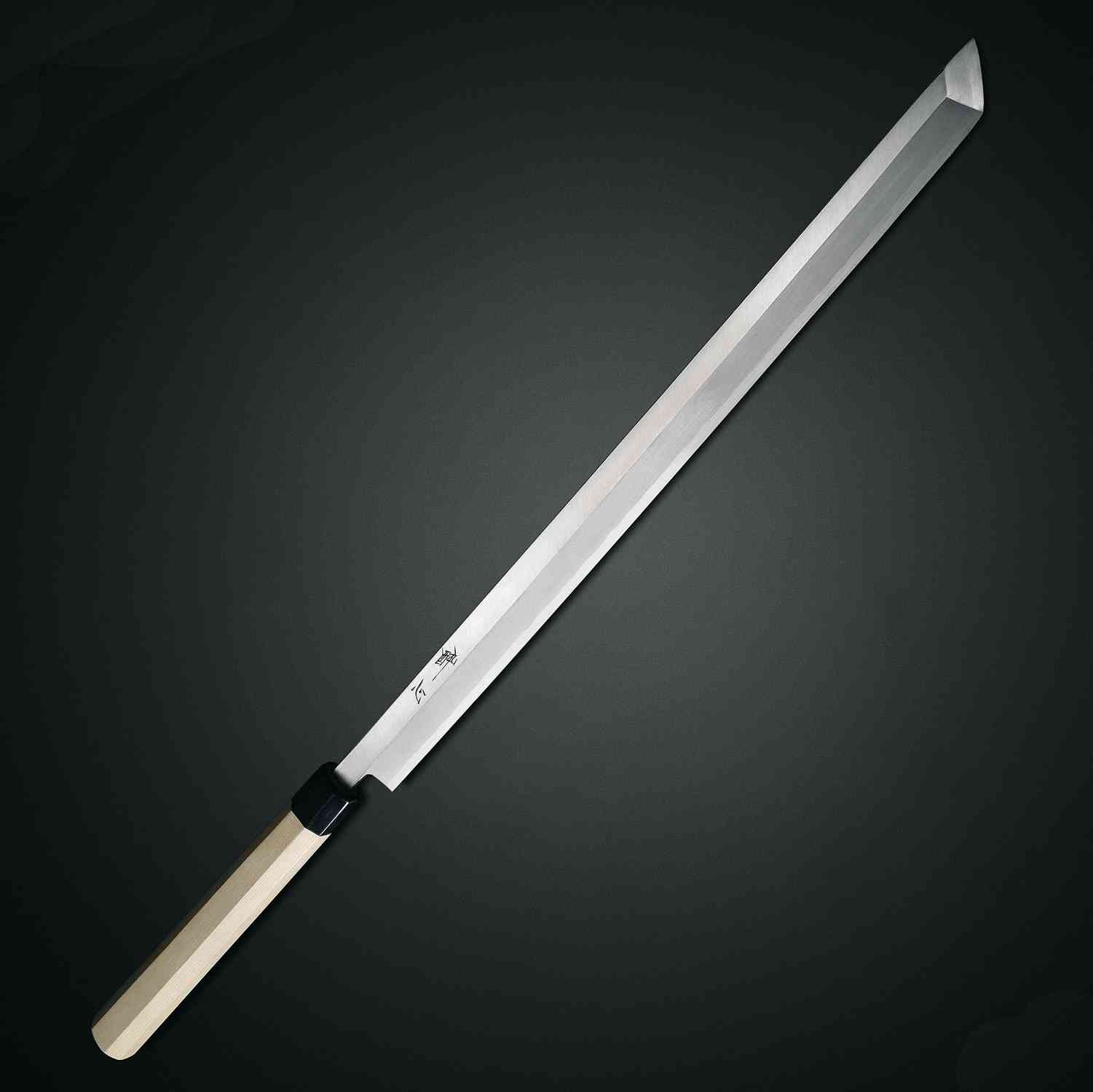Looking Back at the Best Butcher Contest
josh
Posted on September 13th, 2012

There’s a lot that I will remember about Meatopia, presented by Whole Foods Market, on a stormy Saturday in 2012. There was the sun, followed by a tornado threat, followed by a glancing rainstorm that barely dampened the spirits of the assembled crowd; a brief sunburst afterward, and a second wind for sated appetites; and then, darkness and rain.
But some of my most vivid memories were of MCing the Best Butcher Contest. The three Whole Foods butcher up there on the stage were working so hard, with such intent concentration, that it was as if they didn’t even feel the looming clouds and accelerating winds. Their forearms flexed and knotted and sweat rolled down their faces as they first attempted to stuff a duck inside a chicken inside a turkey, an unnatural act only a Dr. Moreau could be expected to perform; then showing off their creative butcher cuts, contributions to the way we’ll eat, and cook, in the 21st century; and finally, in the last round, taking on the most elemental of all butcher tasks, breaking down an entire small animal, with hacksaw and knife.
At the end, Armand ‘The Arm’ Ferrante from Middletown, NJ, emerged victorious in the 2012 Best Butcher contest. His Jersey Boneless Short Rib steak will be on sale at Whole Foods Market stores for a year, and goes exceedingly well with Chef Tim Byre’s remarkable dry rub, which will be found on the store site. The Arm brought his own cheering section with him, and as the event wound down, they stayed steadfast to the very last, cheering him on and then, triumphantly, celebrating his win. It was the best kind of way to end the father of all meat events. Our congratulations go out to Armand, and our thanks to Whole Foods Market, without whom Meatopia would be impossible.


 The best part about having a lot of meat around is that you get to cut it. Which means you have an excuse to buy, and use, very sharp knives. But sharp isn’t good enough. Any plastic-handled fish knife, of the kind they sell in bait stores, can be sharp if you sharpen it enough. The obsidian hand tools chipped off by proto-humans at the Olduvai gorge two million years ago are plenty sharp, if it comes to that. But of course, once you become enraptured by knives – their curves and cutting edges, the tempering lines running daintily up their steel, their damascus patters and lethal points – sharpness just isn’t enough any more. I found myself thinking about this when in
The best part about having a lot of meat around is that you get to cut it. Which means you have an excuse to buy, and use, very sharp knives. But sharp isn’t good enough. Any plastic-handled fish knife, of the kind they sell in bait stores, can be sharp if you sharpen it enough. The obsidian hand tools chipped off by proto-humans at the Olduvai gorge two million years ago are plenty sharp, if it comes to that. But of course, once you become enraptured by knives – their curves and cutting edges, the tempering lines running daintily up their steel, their damascus patters and lethal points – sharpness just isn’t enough any more. I found myself thinking about this when in 
